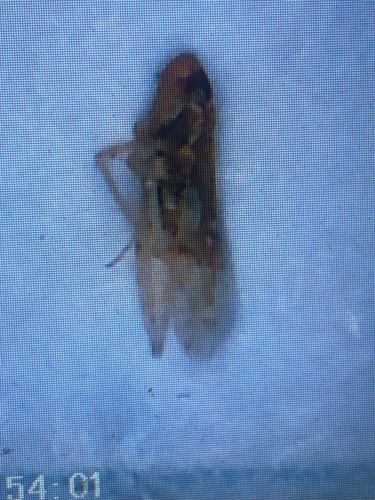Leafhopper (likely a species of Cicadellidae)
Scientific Name: Too difficult to determine exact genus/species from the image, but it belongs to the family Cicadellidae.
Order & Family: Order: Hemiptera, Family: Cicadellidae
Size: Typically small, ranging from 2 mm to 15 mm in length, depending on the species.

Natural Habitat
Widely diverse habitats wherever host plants are present, including agricultural fields, gardens, forests, grasslands, and wetlands. They are found on various parts of plants, including leaves, stems, and sometimes roots.
Diet & Feeding
Herbivorous. Leafhoppers feed on plant sap (phloem or xylem) using their piercing-sucking mouthparts. Specific diet varies by species, but many are polyphagous, feeding on a wide range of host plants including trees, shrubs, grasses, and crops.
Behavior Patterns
Leafhoppers are active jumpers and flyers, especially when disturbed. They communicate through substrate-borne vibrations. Nymphs typically feed on the underside of leaves and move readily when disturbed. Adults are often found on the upper leaf surfaces. Many species overwinter as eggs laid in plant tissue or as adults in sheltered areas.
Risks & Benefits
Potential risks include being significant agricultural pests by directly damaging plants through feeding (causing stippling, chlorosis, necrosis) and by transmitting numerous plant diseases (e.g., viruses, phytoplasmas, bacteria) which can cause severe crop losses. Some species can also cause hopperburn. Generally, they do not bite humans or animals. Benefits are limited, though they serve as a food source for some predators and parasitoids.
Identified on: 8/28/2025